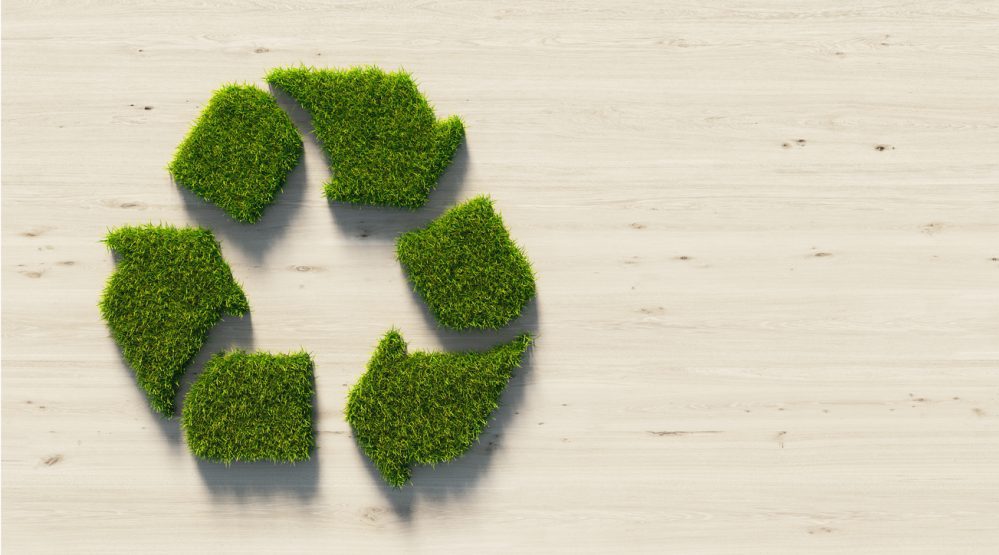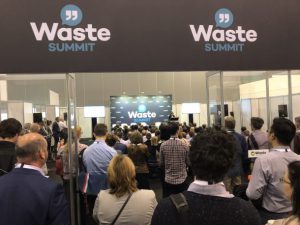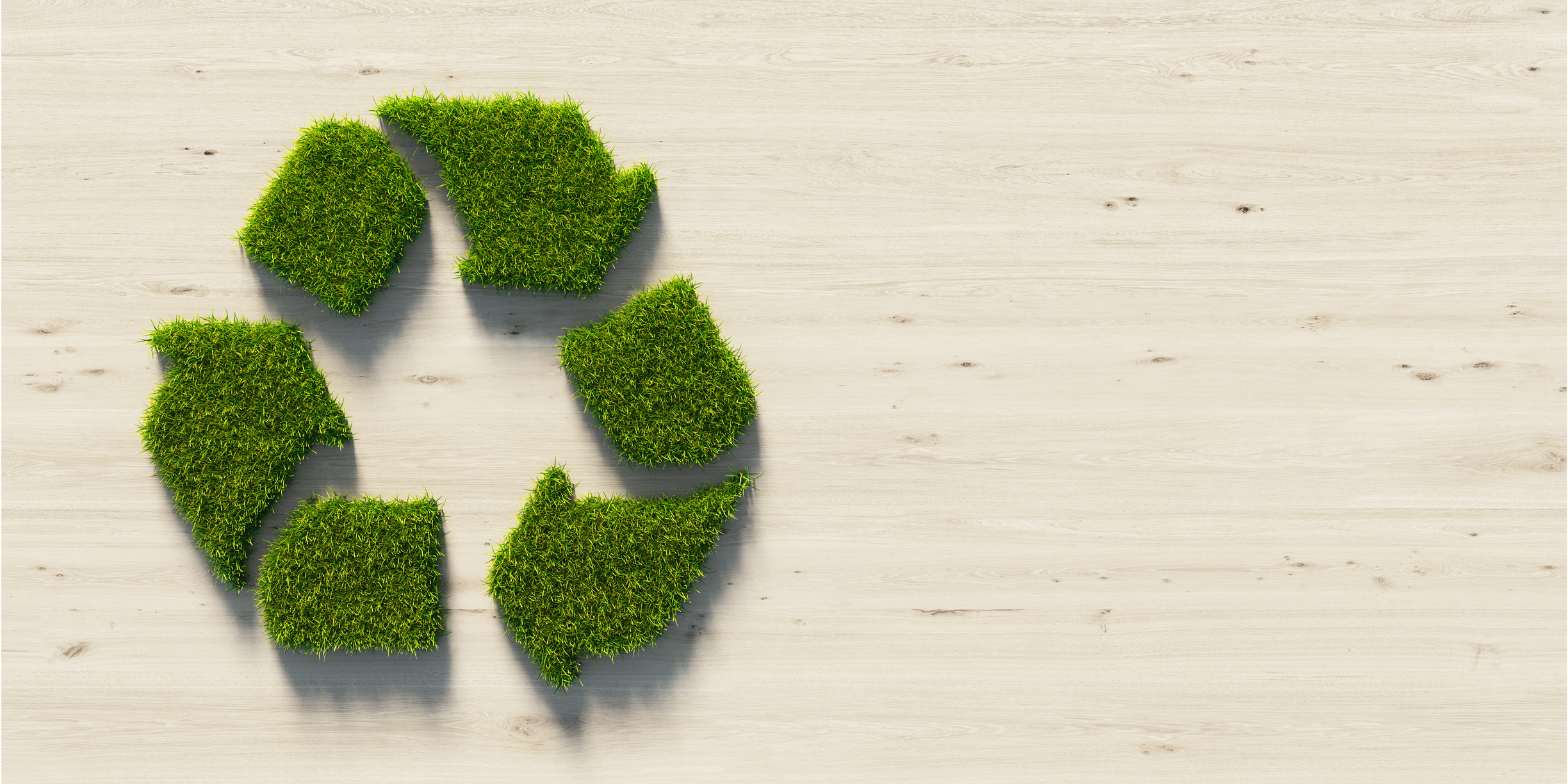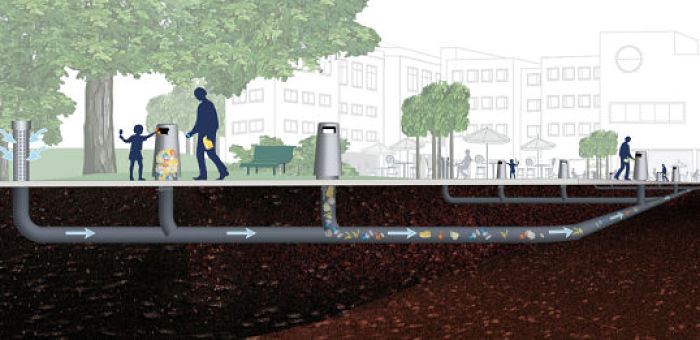
Australia has been forced to step up on the back of China’s decision to restrict exporting our waste offshore, alternative neighbours Malaysia and Indonesia have taken the same view.
According to the National Waste Report, Australians produced 64 million tonnes, or 2.7 tonnes per person of waste in 2014-15. Most of this was from construction and demolition and commercial industrial resources.
With a projected population of 40 million people in 2050, that could rise to over 100 million tonnes. This assumes we were to do nothing about the problem, and a confronting reminder of the consequences if we don’t.
Perhaps it’s brash to think we may have been spoilt with our offshore options until now, but it is crystal clear we must start dealing with our own backyard differently – ‘Binning it’ it simply doesn’t cut it.
How facility managers can close the loop to a circular economy
Facility managers can contribute to the waste problem by simply closing the loop by adopting biodegradable options and sustainable procurement principles, for example procuring employee workstations that are crucial to staffing requirements rather fitting an entire office unnecessarily.
Keeping design for setup and fit out phases in a property scenario are another example of keeping waste management top of mind.
Paul Mead, co-founder of Kernel Property says,“Briefing tenant advisors on waste requirements when vacating or searching for a commercial property is key”.
Utilising existing fit outs and furniture where possible are just some of the creative ways to think of smart waste management, much like the option to consider ‘re-lifying’ a location that has never been occupied.
Commercial and residential waste housekeeping continue to be incredibly important. Investing in clearly marked bins for staff, domestic cleaners for sorting are a must to keep disposables from getting out of hand and into the wrong processing bins.
Five practical tips for facility managers to help close the gap on waste
- Refusing and reducing waste where possible
- Improve resource recovery in the case of reusables
- Build local demand and introducing other waste streams
- Better manage key materials
- Improve waste information and community business education programs.
Rose Read, CEO of the National Waste and Recycling Industry Council (NWRIC), says a habit change is needed to improve recycling rates.
“Our current recycling rate is 60 per cent, to make recycling work we have to start looking at the products we are buying and making sure we have recycling contents in them, if we don’t we are not closing the loop and our chances of improving this rate will not happen.”
Recycling materials and alternative manufacturing to minimise waste
Over 30 per cent of our exported materials were previously going to China and because of the ban we are left with stockpiles. In short, our landfills are full so much facilities in the ACT and VIC states were forced to close its doors to enable processing impacting 30,000 councils.
We need a 360 change to turn things around. How we do this, is simply by understanding the basics of recycling and the types of waste causing our issue to begin with. The ideal scenario, investing in reusable materials.
Data shows us that plastics are at 20-25 per cent and high quality paper is up around the 70-80 per cent mark, with a 60 per cent fall in the e-waste categories.
Because of the cycle of waste and poor choices on pricing, waste sorting and lack of education. Bins are not being sorted as they should, landing up in the incorrect processing orders and risking contamination.
Tony Khoury, Executive Director of the Waste Contractors and Recyclers Association NSW suggests diverting the organics from the landfill and composting them when possible.
Composting reduces greenhouse emissions generated in landfill and recover organics and start to apply those to landscaping, mining rehabilitation, forestry rehabilitation and start to improve our carbon.
The solution: getting smart on design and supply chain selections
It’s a no brainer that biodegradable products are not only better for the environment but they help to fight the war on waste. The environmental industry’s view believes creating ‘value’ products for users are key as they will be less likely to dispose of it.
Value means there is a care and this will help to minimise the burden of our waste issue moving forward. Price is a huge contribution to the ‘chuck away society’ until now.
Recycle experts like Waste Management Association of Australia (WMAA) president Garth Lamb, expressed his opinion in an ABC article, stating there needs to be guidelines to ensure councils and businesses prioritise recycled goods over virgin materials.
“We need to be in a position where we’re providing real value to communities, not just trying to do everything at the lowest cost possible.”
Brendan Lee, an environmental scientist and managing director of Closed Loop Environmental Solutions echoes the sentiment driving value, reusable packaging can benefit the waste problem in the long run.
“If we apply the waste hierarchy and start replacing disposables with reusable that is the solution, the challenge is we can’t do this for everything particularly with food, a lot of our waste comes from food packaging, and food waste is typical. 35 per cent of what’s in a household bin, most of the rest is around food packaging, and it’s been the case due to it being functional.”
Marketing consumer responsibility and social enterprise on waste
Nothing is more satisfying than being part of the greater good. A stellar example of this, is social enterprise Pony up for good, a full-service technology reuse and e-waste recycling provider turning company’s decommissioned technology into healthy meals for those in need.
In another scenario, convincing companies to buy back their own rubbish sounds like a stretch, but Melbourne’s social enterprise Green Collect has made it work.
Companies in the city office towers pay Green Collect to take away hard-to recycle waste and employ disadvantaged people to refashion it into something useful selling it back to the companies who threw it out in the first place, its frankly a win-win social feel good, and for our environment.
What shadows as an impossible situation, can become a positive one by finding a comparable solution, IF we truly think outside the box. Facility Managers can sway the cards but adopting better manufacturing choices that provide ‘value’ for the consumer.
By virtue of partnering with manufacturers to develop products of value for consumers, evidence suggests the ‘chuck away society’ would be minimised. Appropriate bins in organisations and domestic cleaning staff briefings are simple measures to adopt a new recycling mindset aside from the much needed government intervention at scale.
Australia has a unique opportunity to lay the foundations for the type of society and economy it wants. The question remains, will facility managers help make Australia waste free again?
This article was first published by Total Facilities and has been republished with permission.
Comment below to have your say on this story.
If you have a news story or tip-off, get in touch at info@3.106.117.80.
Sign up to INCLEAN’s newsletter.





